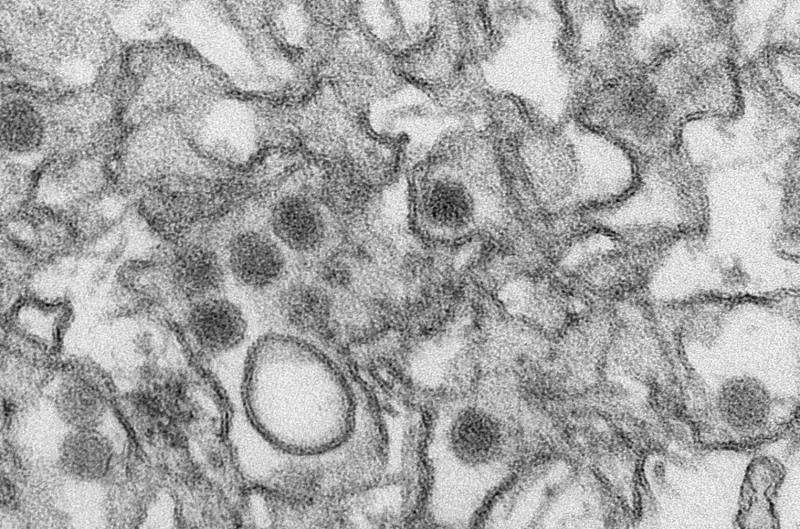New test distinguishes Zika from similar viral infections

A new test is the best-to-date in differentiating Zika virus infections from infections caused by similar viruses. The antibody-based assay, developed by researchers at UC Berkeley and Humabs BioMed, a private biotechnology company, is a simple, cost-effective way to determine if a person's infection is from the Zika virus or another virus of the same family, such as dengue and West Nile viruses.
Zika is a mosquito-borne disease and is linked to severe congenital birth defects. Assays already exist to detect Zika virus infection, but they either work only shortly after infection or are poor at differentiating Zika from other flaviviruses. The limited ability of assays to detect Zika virus has led to difficulty in determining the prevalence of Zika virus infections, the incidence of congenital Zika syndrome and the frequency of neurological complications associated with Zika virus infections.
The new assay has very high sensitivity (91.8 percent) and specificity (95.9 percent) for identifying Zika virus infections. The assay is currently in the licensing process and researchers hope it will be available to the medical community soon.
"The whole world has been in urgent need of a serological method to distinguish dengue virus from Zika virus infections, and this the first to have such high sensitivity and specificity in dengue-endemic regions," said Eva Harris, study co-author and UC Berkeley professor in the Division of Infectious Diseases and Vaccinology at the School of Public Health.
The article will be published online the week of July 17 in the journal Proceedings of the National Academy of Sciences. The research was supported, in part, by grants from National Institutes of Health.
Utilizing its proprietary CellClone discovery technology, Humabs generated a new human antibody to the Zika virus, which the company then used to develop the assay. The assay is based on a well-established approach to detecting viral infections, but the new antibody and protocol give the assay superior sensitivity and specificity, two key assay metrics.
The assay was implemented in five countries and tested using a large number of clinical samples from travelers and patients living in areas with a high level of exposure to Zika virus and other flaviviruses. The new assay was highly sensitive, specific and robust, according to the study data. When the assay was run on patients infected with Zika virus and also on a control group of 540 patients infected by other flaviviruses or other viruses, plus healthy donors, the specificity was 95.9 percent.
The assay was developed using detailed patient samples from Harris's collaborative studies in Nicaragua, a large step forward over previous studies. These samples included multiple, longitudinal samples from Zika patients, with or without prior exposure to dengue virus, and samples from dengue patients infected either once or more than once with different types of the dengue virus. The samples were obtained from a 14-year study of a cohort of children whose previous viral infection histories were well documented. These samples were key to the research, because prior dengue virus infections can cross-react and confound many current Zika antibody-based assays; having a thoroughly analyzed pool of patient samples helped the research team characterize and avoid this cross-reactivity.
"These results support that the antibody-based assay that we have developed is highly effective in detecting both recent and past Zika virus infections and in discriminating Zika from other flavivirus infections," said Davide Corti, senior vice president and chief scientific officer of Humabs BioMed. "This novel assay has the potential to become an effective, simple and low-cost solution for Zika surveillance programs, prevalence studies and clinical intervention trials in flavivirus-endemic areas."
The assay is cost effective and easy to use, the researchers say, and additional studies are ongoing to further simplify the assay protocol.
More information: Angel Balmaseda el al., "Antibody-based assay discriminates Zika virus infection from other flaviviruses," PNAS (2017). www.pnas.org/cgi/doi/10.1073/pnas.1704984114

















